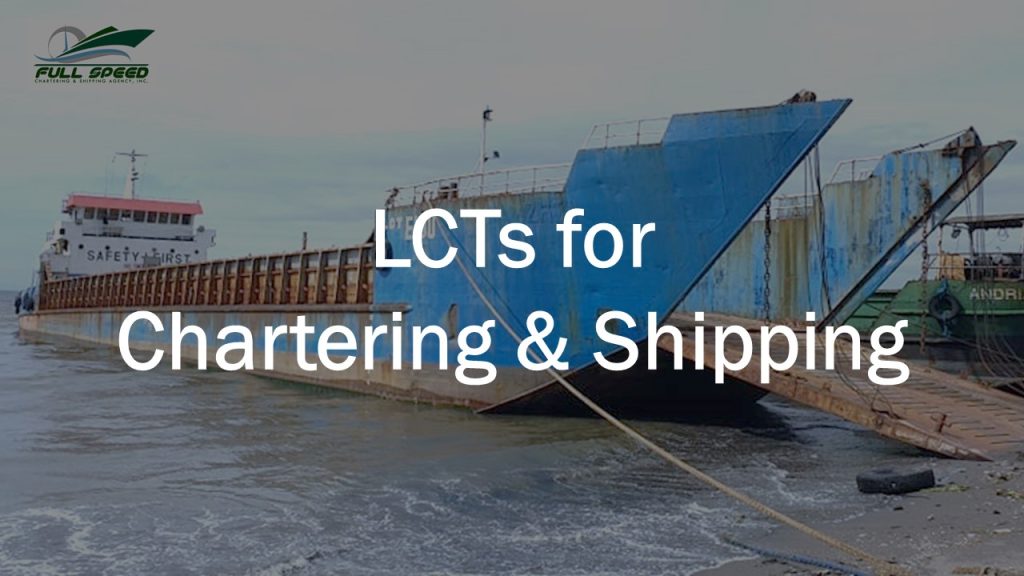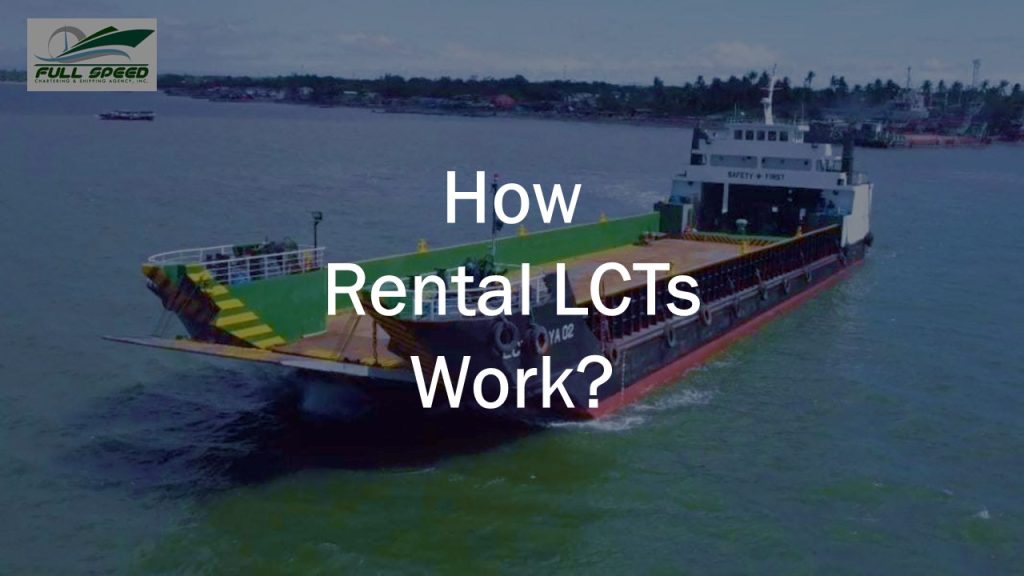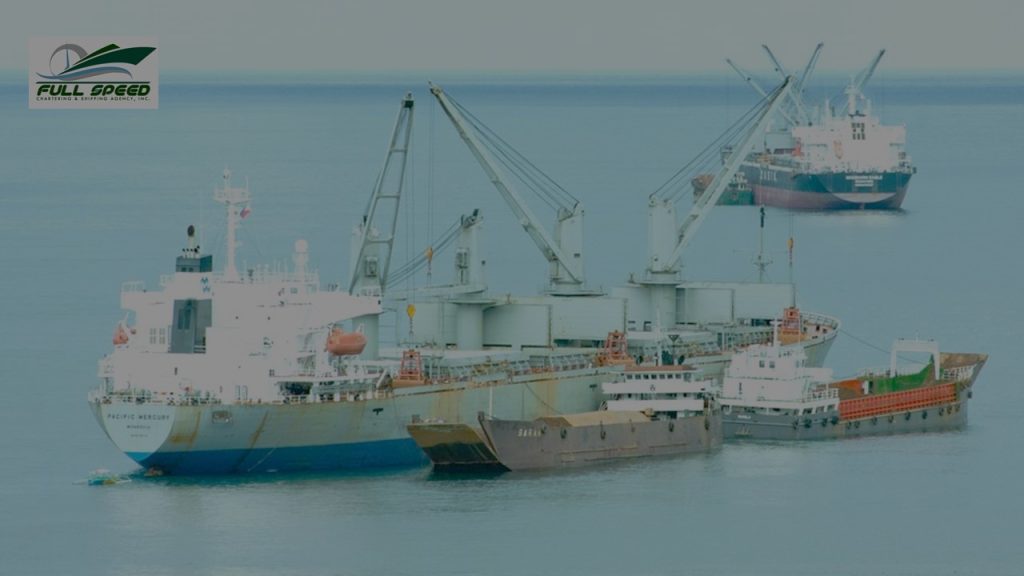With its archipelagic nature and numerous islands, the Philippines heavily relies on maritime transportation for trade and defense purposes. Landing craft transport in the Philippines is among the many types of vessels that play a crucial role in the country’s maritime operations. These specialized ships are designed to transport cargo, vehicles, and personnel from larger vessels or offshore areas to the shorelines of different islands or coastal areas.
Landing craft transport in the Philippines serves various purposes, including military operations, humanitarian aid missions, disaster response efforts, and even commercial ventures such as the transportation of mining equipment and minerals from mining sites to large shipping vessels. These versatile vessels have ramps or doors at their bow or stern to facilitate easy loading and unloading of cargo and vehicles directly onto beaches or makeshift piers.
Click here to view our rental LCTs in the Philippines.
The Importance of Landing Craft Transport in the Philippines
Rental landing craft transport in the Philippines plays a vital role in the country’s economic and governmental projects. With an archipelagic nation comprising over 7,000 islands, an extensive coastline, and numerous waterways, efficient maritime transport is crucial for civilian and military purposes. Landing craft transport in the Philippines serves as an indispensable means of transportation that connects isolated communities, enables the delivery of goods and services to remote areas, and facilitates disaster response efforts.
In terms of civilian use, landing craft transport provides a lifeline for many coastal communities that lack access to roads or airports. These rental LCT vessels can navigate shallow waters and reach even the most secluded island villages. They ensure the delivery of essential supplies such as food, medicine, construction materials, and fuel to these underserved areas. Moreover, landing craft can also transport passengers between islands efficiently and safely.
On a broader scale, landing craft transport in the Philippines is essential for disaster response. The Philippines is a country prone to natural disasters such as typhoons, earthquakes, and volcanic eruptions. In the face of these calamities, landing craft transport plays a crucial role in facilitating efficient disaster response efforts.
When a disaster strikes and roads become impassable or destroyed, landing craft provide a reliable means of transportation for emergency personnel and supplies. These vessels can navigate through debris-filled waters and reach affected coastal areas that are cut off from land-based rescue operations.
In commercial and shipping use, rental landing craft tanks in the Philippines provide the transport of heavy equipment, machinery, construction materials, and other heavy cargo to remote or inaccessible locations. They are designed with a flat bottom and a ramp at the front, allowing for easy loading and unloading of goods directly onto the shore or makeshift landing zones.
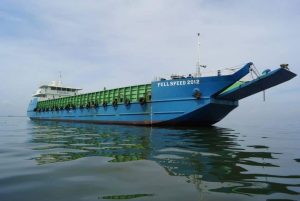
1. Balsa: Traditional Landing Craft Transport in the Philippines: Balsa
The balsa, a traditional Filipino watercraft, has been an integral part of transportation and trade in the Philippines for centuries. This unique type of landing craft transport in the Philippines is primarily made from bamboo and other locally sourced materials, making it not only economical but also environmentally friendly. The balsa has played a crucial role in connecting remote island communities and facilitating the movement of goods and people across bodies of water.
The construction process of a balsa involves carefully lashing together large bamboo poles to create a sturdy base. The platform is then elevated using smaller bamboo poles or logs to provide stability and buoyancy. Traditionally, coconut leaves or plastic sheets are used as makeshift sails to harness the wind’s power for propulsion. However, modern adaptations include the use of small outboard motors for increased efficiency and speed.
2. LCTs: A Modern Landing Craft Transport in the Philippines
Modern landing craft transport (LCT) vessels have become a crucial part of the Philippines’ maritime infrastructure, enabling the efficient movement of goods and personnel between islands. These versatile vessels are specifically designed to transport heavy equipment, vehicles, and supplies directly onto the shore without the need for a port or terminal. The development and utilization of LCTs for hire in the Philippines have revolutionized logistics operations, especially in remote and hard-to-reach areas that lack proper port facilities.
The Philippines heavily relies on maritime transport for domestic trade and inter-island connectivity. The use of rental LCTs in the Philippines has significantly enhanced these transportation capabilities by providing an efficient means to deliver critical supplies to previously inaccessible communities due to geographical limitations. Moreover, these modern landing craft transports are equipped with advanced navigation systems, ensuring safe and reliable journeys even during unfavorable weather conditions.
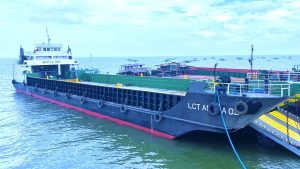
3. RoRo: Roll-On/Roll-Off Landing Craft Transport in the Philippines
The Philippines, known for its archipelagic geography, heavily relies on maritime transport to connect its many islands. A vital asset in this regard is the modern landing craft known as Roll-on/Roll-off (RoRo) vessels. These versatile ships have revolutionized transportation and logistics within the country, providing an efficient means of moving goods and people across Philippine waters.
With their unique design, RoRo vessels allow cargo trucks and other vehicles to drive directly onto the ship’s deck, eliminating the need for time-consuming loading and unloading processes. This streamlined approach has significantly reduced shipping times and costs while increasing efficiency. Moreover, these advanced landing craft are equipped with state-of-the-art navigation systems and safety features, ensuring secure passage even during adverse weather conditions.
The introduction of modern RoRo vessels has greatly improved connectivity between remote islands in the Philippines.
4. Landing Craft Utility: Versatile and Reliable Landing Craft
Landing Craft Utility (LCU) vessels have become the backbone of maritime transport in the Philippines. These versatile and reliable boats play a crucial role in transporting troops, vehicles, and supplies to remote islands and coastal areas. With their ability to navigate shallow waters and deliver cargo directly onto beaches, LCUs have proven instrumental in disaster response efforts and military operations.
LCUs are designed for optimum efficiency, with spacious decks that can accommodate various cargoes such as trucks, tanks, or even construction equipment. Their sturdy construction ensures stability even in challenging sea conditions, allowing for safe loading and unloading of goods. This versatility makes them indispensable for both civilian and military purposes – from delivering relief goods during typhoons to supporting amphibious assault missions.
Moreover, LCUs have played a vital role in reaching geographically isolated communities within the archipelago.
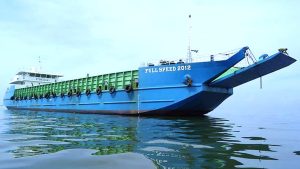
5. Landing Craft Air Cushion: Swift and Agile
One of the most notable types of landing craft transport in the Philippines is the Landing Craft Air Cushion (LCAC). This specialized amphibious vehicle is known for its swift and agile nature, allowing it to maneuver through various terrains with ease. The LCAC utilizes a cushion of air to lift itself off the ground, which reduces friction and enables it to glide smoothly over land and water.
The LCAC is equipped with powerful engines that provide a high level of speed and maneuverability. With its unique design, this type of landing craft transport in the Philippines can reach speeds of up to 40 knots, making it an ideal choice for the fast deployment of personnel and equipment during military operations or disaster response efforts. Its agility allows it to swiftly navigate shallow waters, narrow channels, and even rough sea conditions without compromising its stability or performance.
In addition to its speed and agility, the LCAC also offers a significant payload capacity. It can carry heavy loads such as tanks, trucks, personnel carriers, or construction equipment. This makes it an invaluable asset for transporting essential supplies or conducting rapid deployments in remote areas where traditional transportation methods may be limited or impractical. Overall, the Landing Craft Air Cushion proves itself as a swift and agile solution for efficient transportation needs in various scenarios throughout the Philippines.
6. Landing Craft Mechanized: Heavy-Duty Workhorse
One of the most notable types of landing craft transport in the Philippines is the Landing Craft Mechanized (LCM). This heavy-duty workhorse is designed to efficiently transport personnel, vehicles, and equipment from ship to shore. With its robust construction and powerful engines, the LCM can handle even the toughest terrain and adverse weather conditions.
The LCM features a large cargo deck that can accommodate various payloads, making it versatile for different military operations and humanitarian missions. Its ramp allows for easy loading and unloading of vehicles, ensuring swift deployment on land. Additionally, the LCM is equipped with advanced navigation systems and communication devices to ensure precise maneuverability during operations.
The Landing Craft Mechanized (LCM) plays a crucial role in transporting personnel, vehicles, and equipment in the Philippines. Its heavy-duty design enables it to operate effectively in challenging environments, making it a reliable workhorse for various military and humanitarian missions.
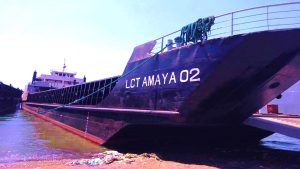
7. Specialized Landing Craft Transport in the Philippines: Purpose-Built for Specific Tasks Like Mining
In the Philippines, various types of landing craft transport vessels are purpose-built for specific tasks. One such type is the specialized landing craft transport designed specifically for mining operations. These vessels have unique features and capabilities that allow them to transport heavy mining equipment and materials to remote areas efficiently.
Specialized landing craft transports used in mining usually have large deck spaces and high load capacities to accommodate the heavyweight machinery used in mining and construction engineering operations. They also often have ramp doors at both ends of the vessel, allowing easy loading and unloading of equipment directly onto land or barges. Additionally, these vessels may be equipped with dynamic positioning systems to ensure precise docking even in challenging conditions.
The purpose-built design of these specialized rental landing craft transport in the Philippines enables them to navigate shallow waters and access remote locations where traditional transportation methods may be limited or nonexistent. Their versatility makes them essential in supporting mining activities by providing a reliable means of transporting heavy equipment, supplies, and personnel necessary for efficient mining operations across the Philippine archipelago.
8. Military Landing Craft: For Peacekeeping Forces
With the need to swiftly transport troops and equipment across vast stretches of water, the Philippine military heavily relies on landing craft transport. These specialized vessels are essential for warfare in this island nation.
Landing craft transport plays a crucial role in the Philippine military’s ability to project power and respond promptly to threats. These versatile vessels are specifically designed to deliver troops and equipment directly onto shorelines without the need for established ports or infrastructure. With their shallow drafts and ramp doors at the bow or stern, these crafts can land troops even on beaches with challenging terrain. This capability is invaluable in combat scenarios where surprise attacks or rapid deployments are essential.
Moreover, landing craft transport in the Philippines enables swift responses during humanitarian crises or natural disasters that frequently plague the region.
9. Disaster Response Landing Craft Transport in the Philippines
In a country prone to natural disasters, such as the Philippines, having reliable and efficient means of transportation is essential for effective disaster response. Among the various modes of transport available, landing craft have emerged as a crucial component in facilitating relief efforts. These versatile vessels play an instrumental role in accessing remote areas affected by calamities, delivering aid supplies and personnel where they are needed most.
Landing craft transport in the Philippines possesses unique capabilities that make them ideal for disaster response operations. With their ability to traverse both land and water, these vessels can reach even the most inaccessible regions affected by floods or landslides. Equipped with shallow drafts and ramps, they can directly transport heavy equipment and vehicles onto shorelines that may otherwise be unreachable by traditional means.
10. Commercial Landing Craft Transport in the Philippines: Importance in Trade and Commerce
Commercial landing craft transport in the Philippines plays a crucial role in facilitating trade and commerce. With its extensive coastline and numerous islands, the country heavily relies on water transportation to connect businesses and communities across different regions. Landing craft, specifically designed vessels that can navigate shallow waters and have the ability to unload cargo directly onto beaches or makeshift docks, are essential for transporting goods to remote areas where traditional ports are inaccessible.
These versatile vessels serve as lifelines for industries such as construction, mining, tourism, and agriculture. Construction companies rely on landing craft transport to deliver heavy equipment, construction materials, and supplies to remote project sites along coastal areas or nearby islands. Similarly, mining and construction engineering operations depend on this mode of transportation to move raw materials from extraction sites to processing facilities located in more accessible regions.
Challenges and Future of Landing Craft Transport in the Philippines
Landing craft transport in the Philippines is essential for transporting troops, equipment, and supplies to areas with limited or no port facilities. However, this vital mode of transport has not been without its challenges.
One of the primary challenges faced by landing craft transport operators in the Philippines is inadequate infrastructure. Many remote areas lack proper docking facilities or piers that can accommodate these vessels. As a result, they rely on makeshift ramps or beaches for loading and unloading operations. This not only poses risks to personnel and cargo but also increases turnaround time and hampers efficiency.
Another challenge is the unpredictable weather conditions prevalent in this region. The unpredictable weather conditions prevalent in this region pose another significant challenge for landing craft transport operators. These vessels often have to navigate through rough seas, strong currents, and extreme weather events such as storms and typhoons. The safety of both the crew and the cargo is at risk during these challenging conditions.
These adverse weather conditions can cause delays or even cancellations of scheduled trips, disrupting supply chains and causing financial losses for businesses relying on these modes of transport.
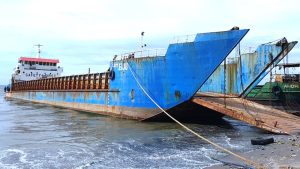
The Versatility and Vitality of Landing Craft Transport in the Philippines
Rental landing craft transport in the Philippines has proven to be an indispensable asset, showcasing both its versatility and vitality in various operations. These vessels serve as a lifeline for the archipelagic nation. Whether it’s delivering troops and equipment during military exercises or providing aid during natural disasters, landing craft transport plays a crucial role in ensuring efficient logistics and transportation.
One of the key advantages of landing craft transport is their ability to navigate shallow waters, making them ideal for reaching remote coastal areas that are inaccessible to larger ships. This flexibility allows for the swift deployment of troops and equipment, enabling rapid response times in emergency situations. Additionally, these vessels often feature ramps or bow doors that can be lowered onto beaches or makeshift docks, facilitating quick loading and unloading of cargo.
Furthermore, landing craft transport enhances the Philippines’ maritime security capabilities by bolstering its amphibious warfare capabilities.
Do You Need Landing Craft Transport in the Philippines?
Are you in need of reliable and efficient rental landing craft transport (LCT) in the Philippines? Look no further than Full Speed Chartering and Shipping Agency, Inc. With our extensive fleet of well-maintained LCTs, our company offers cost-effective solutions for all your transportation needs.
- Email us: info@fullspeedchartering.com
- Call our 24-hour hotline: +63 939 375 3224
- Viber: +63 939 375 3224
- WhatsApp: +63 939 375 3224
- Facebook Messenger: Click here
- Click here to inquire
Full Speed Chartering and Shipping Agency, Inc. understands the importance of timely delivery and safe handling of cargo. Our LCTs are for long-term and short-term leases and are built to withstand even the most challenging conditions, ensuring that your goods arrive at their destination intact. Whether you require transportation for construction materials, mining minerals, heavy equipment, or even vehicles, we have the perfect LCTs for rent in Luzon, Visayas, and Mindanao to meet your requirements.
What sets Full Speed Chartering and Shipping Agency, Inc. apart from other rental LCT companies in the Philippines is our commitment to providing excellent customer service. We understand that every client has unique transportation needs, and our team is dedicated to finding the best solution for you. From the moment you contact us, we prioritize clear communication and understanding your specific requirements.
Our experienced Filipino marine engineers will work closely with you to assess your cargo’s size, weight, and any special handling instructions. This ensures we select the most suitable LCT from our extensive fleet for your shipment.
Final Thoughts: Different Types of Landing Craft Transport in the Philippines
In conclusion, the Philippines is home to a diverse range of rental landing craft transport vessels that serve various purposes. From the versatile LCTs for rent in the Philippines that can carry both cargo and passengers to the specialized amphibious assault vehicles used by the military, these vessels play a crucial role in transporting goods and people across the archipelago.
The development and utilization of different types of rental landing craft transport in the Philippines demonstrate the country’s commitment to improving its transportation infrastructure and ensuring efficient logistics operations. As the Philippines continues to grow and expand its economy, it is important to invest in modernizing and expanding its fleet of landing craft transport vessels. By doing so, the country can enhance connectivity and strengthen its capacity for maritime trade.
From LCTs to LCUs and LSTs, these landing craft transports play a vital role in ensuring the accessibility and development of isolated regions in the Philippines.

